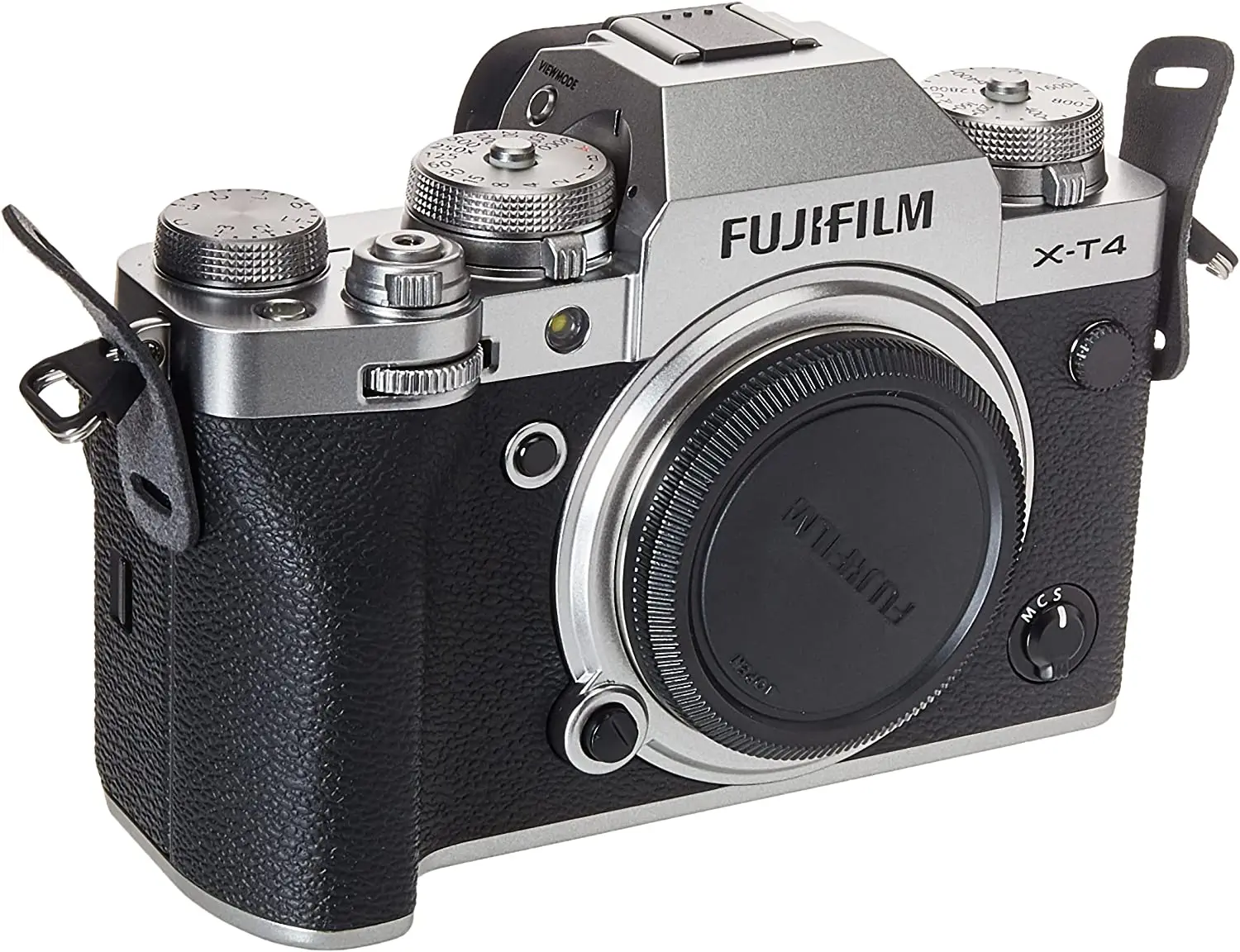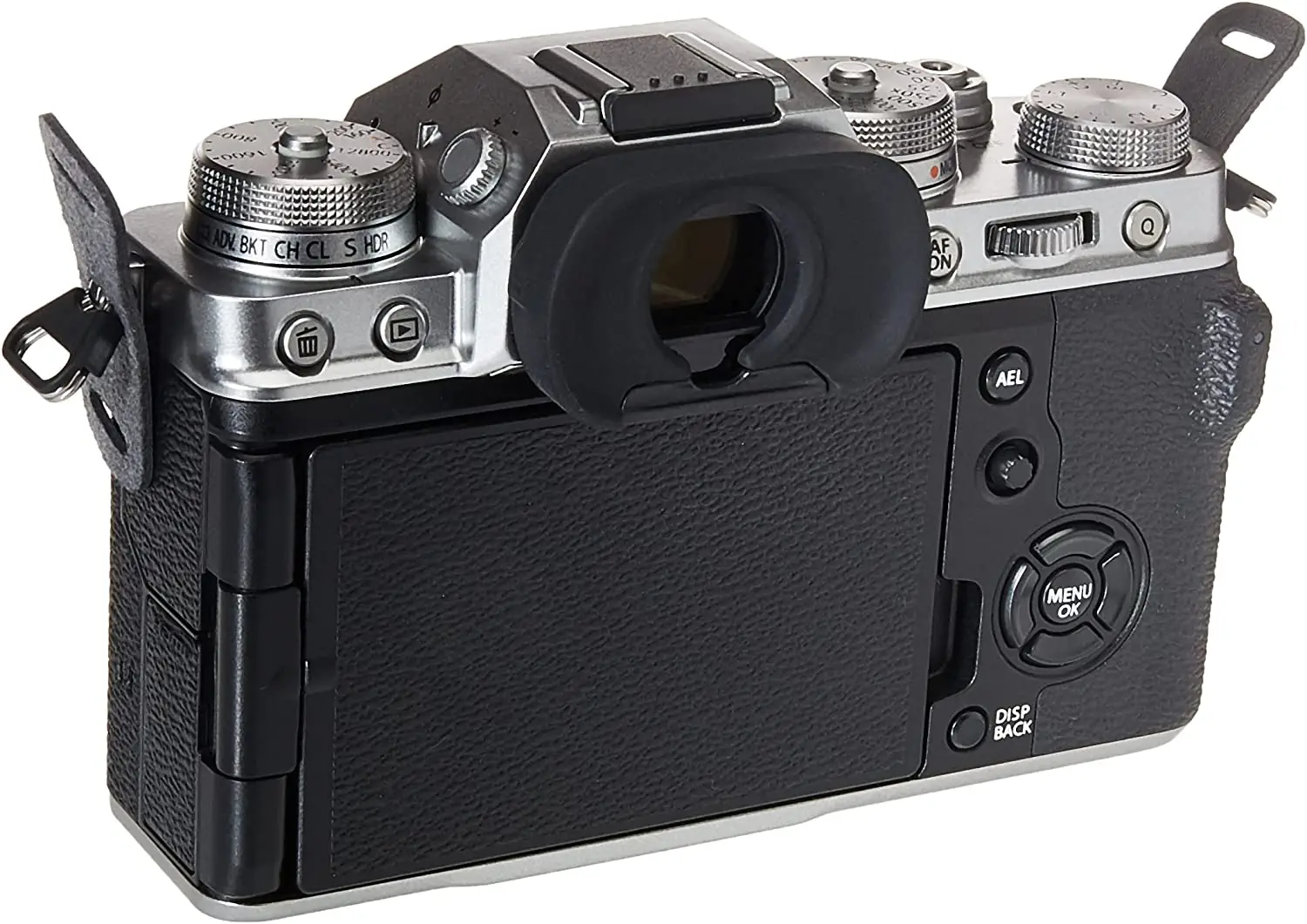This Epic and All New Fujifilm X-T4 Mirrorless Camera Is Taking Over The Camera World
Prices pulled from the Amazon Product Advertising API on:
Product prices and availability are accurate as of the date/time indicated and are subject to change. Any price and availability information displayed on [relevant Amazon Site(s), as applicable] at the time of purchase will apply to the purchase of this product.
- Putting Stability in Your Hands: A huge part of creating great photos or videos is making sure you are in the right place at the right time – and that often means making handheld images to get to the heart of the action. X-T4’s state-of-the-art, five-axis In-Body Image Stabilization (IBIS) provides up to 6.5 stops of image stabilization to make sure that, even in the midst of all the excitement, your images remain steady and sharp. Combine this with the new four-axis Digital Image Stabilizer, and you have lots of room to maneuver.
- Performance You Can Rely On: For any serious image maker, having a tool that can be relied upon to perform flawlessly whenever it is required is extremely important. For this reason, X-T4 features a newly developed mechanical shutter that is the fastest and most robust in the history of the X Series. Not only can it make images at 15 frames per second, but it is also rated for 300,000 actuations2. When you combine this with it’s larger capacity battery that is capable of up to 600 frames per charge 2, X-T4 has the power and the durability to give you the peace of mind that you’ll never miss the perfect opportunity.
- Find the Best Angle for Your Story: When chasing the perfect image, versatility is key, so the last thing you want is to be hampered by awkward angles. The 1.62 million pixel vari-angle touchscreen LCD featured on X-T4 can be adjusted to make it visible from a wide range of positions. This not only gives you a high-quality monitor to frame with, but also provides quick and simple controls when you need them most. On the flip side, there are times when you need to minimize the light and distractions that a screen can create. That’s why X-T4’s LCD has been designed to easily fold away so it is completely hidden from view, leaving the updated 3.69 million pixel/100fps electronic viewfinder to help you focus on the moment at hand.
- When Your Story Needs Movement: The modern image maker is blurring the lines between photography and videography, and X-T4 has been designed to celebrate this new generation of hybrid creativity. With the simple flick of a switch, movie mode is activated, meaning X-T4 is capable of recording both professional-level DCI 4K/60p and Full HD/240p super slow-motion video. It is also possible to record F-Log footage in 10-bit color, straight to the card. What’s more, the innovative AF-C subject tracking works in low-light conditions down to -6EV and the camera’s use of a new, high capacity battery lets you push your creative limits.
- Powerful Image Manipulation Made Easy: For over 85 years, Fujifilm has produced photographic films that have been used by some of the world’s best-known moviemakers to create some of the world’s most successful movies. This legendary reputation in color science is celebrated with their hugely popular selection of Film Simulations, which digitize some of the industry’s most iconic films and puts them right at your fingertips. X-T4 introduces ETERNA Bleach Bypass, the newest addition to this much-loved collection of film simulation modes available in the X Series product line, which creates a beautiful de-saturated, high-contrast look that any image-maker will find irresistible

Fujifilm doesn’t often make dramatic departures from its retro blueprint, and the X-T4 is no different. Let’s just say that if you’ve picked up an X-T series camera before, you’ll feel right at home here.
We are fans of the premium Fujifilm X-T ethos. It centers around those bold analogue-style dials on the top plate. The dedicated dials are for ISO, shutter speed and exposure compensation.
Paired with an aperture ring found in many of Fujfilm’s lenses, this provides you with all the key exposure controls at your fingertips. Not only are these dials no slower than using the modern generic control dials, they are arguably more methodical and hands-down more charming.
If the design of a camera entices you to use it more, then the X-T4 could well be your constant companion. There is definitely an emotional connection for camera fans.
Build quality is second-to-none. The X-T4’s full-metal body is weather-sealed and solid as a rock. With its new IBIS unit, the X-T4 is a fraction larger and heavier than the X-T3, but at 603g it’s still much lighter compared to an enthusiast-level DSLR.
A slightly bigger handgrip houses a larger battery unit that boasts almost double the shot life of its predecessor, up to 600-shots in economy mode. It’s a significant step up, plus you have the option of on-the-go charging via the USB-C port.
A change in size also means a new optional vertical grip. This holds up to three of those new batteries and features a dedicated headphone jack, which is missing on the X-T4 body. A USB-C-to-3.5mm dongle comes in the box to attach headphones, but you won’t therefore be able to charge the camera at the same time.
For us, the larger handgrip is still simply not big enough. The X-T4 is already a DSLR-style camera, so why not offer an even deeper grip that is more comfortable to hold? That said, it does depend a little on what your favorite lenses are.
The switch under the shutter speed dial no longer controls metering, but moves between Still or Movie shooting. Removing the metering switch will irritate some dedicated photographers, but the change makes complete sense whether you are using the camera for photos or for video.
Because of this change, new dedicated menu systems are opened up for both Still and Movie shooting. For example, in Still mode the Q menu (or ‘quick’ menu) and the in-camera menu system only contains photography options. Flick to video and the menus change to video options, plus the analogue dials become inactive.
To make exposure changes when shooting video, you use the front and rear clicked control dials. These changes can be made during capture and in conjunction with the touchscreen.
We love the logical separation between the two disciplines and the easy-to-navigate menus. What appears as a minor tweak to the design is indeed a bold move that emphasizes the X-T4’s status as a true hybrid camera.

It might look remarkably similar to its X-T predecessors, but the Fujifilm X-T4 is the biggest leap forward for the series yet, thanks to three main new features: IBIS, a new battery, and a new shutter mechanism.
Otherwise, the X-T4’s headline features are virtually identical to the X-T3, a camera that is 18 months older. You get the same 26.1MP back illuminated APS-C sensor, which is class-leading in terms of detail and low light performance. If it ain’t broke, don’t fix it.
Then there is a movie shooting spec that stands firm today too; Cinema 4K movies up to 60fps, 10-bit internal recording plus HDMI out, up to 400Mbps bit-rate and with F-Log and HLG profiles included as standard. Slow motion Full HD movies are possible up to 240fps, too. If you want great looking videos, the X-T4 will achieve that.
The really big news, though, is that in-body image stabilization (IBIS). On paper, the sensor shift unit beats the one in the Fujifilm X-H1 by one stop, providing up to 6.5EV (or exposure value) of stabilization when used with one of Fujifilm’s stabilized lenses. This includes 18 out of Fujifilm’s total of 29 lenses and is particularly exciting if you own classic prime lenses like the XF35mm f/1.4 or XF56mm f/1.2.
Image stabilization is of particular interest to run-and-gun filmmakers who want steady handheld shots without relying on a gimbal. We’ll share our experience of it further down in the ‘Performance’ section.
The shutter has benefitted from a few improvements – it’s more robust with a 300,000-shot life, it’s quieter than the one in the X-T3 by about 30%, and it’s faster with a new 15fps top speed.
Of course, this speed isn’t particularly helpful if the autofocus can’t keep up with the action, and luckily Fujifilm has fine-tuned its AF system for the X-T4 too. Fuji claims that the X-T4’s tracking success rate is twice as good as the X-T3, which wasn’t exactly a slouch in this department, and the Face / Eye AF has also been improved. You can find our thoughts on this in the ‘Performance’ section below.
As before, the camera maxes out at 30fps when using the electronic shutter. You get a PreShot mode, interval timer, panorama, HDR, bracketing and a range of advanced filters. Again, Raw images can be edited in-camera and uploaded wirelessly using Fujifilm’s app with Bluetooth, Wi-Fi and NFC connectivity.
In short, the X-T4 is the most capable hybrid APS-C camera around, bar none.

So what is the Fujifilm X-T4’s image stabilization actually like? We had the 16-80mm f/4 WR lens for our test, which is listed as obtaining up to 6EV (or stops) of stabilization when both optical stabilization (OIS) and sensor shift stabilization (IBIS) are active.
After multiple efforts with a steady hand, we experienced effective stabilization more like 4EV (or four stops). The same can be said of the 35mm f/1.4 lens. We’d be interested to try more lenses, but for photography, those 6.5EV claims might be a little generous. The Olympus OM-D E-M1 Mark III stabilization is much better.
Still, the stabilization for photos is a minor improvement over the X-T3. And it is a game-changer for those using an X-T camera without an optically stabilized lens.
As for video, the sensor shift stabilization is an improvement on no stabilization at all, obviously. Shake caused by vibrations from walking are reduced, but still evident. This is certainly not the best IBIS we have seen, but it is certainly a bonus over the X-T3.
Activate the digital stabilization in addition to OIS and IBIS and things improve a lot. Shake is almost virtually gone. The trade-off with digital stabilization is that a 1.1x crop factor is applied and somehow the feel of the footage isn’t quite the same.
In short, the X-T4 IBIS does not completely replace the need for a gimbal, but it is very welcome and the performance is especially good when digital stabilization is added.
Autofocus is still the 425-point hybrid system that is quick and reliable across a variety of scenarios. However, the autofocus experience does vary depending on the lens in use. For example, we had the older 35mm f/1.4 lens which does not perform to the same standard as the 16-80mm f/4 lens.
There was a time that AF performance was a weakness of the Fujifilm system. That’s certainly not the case with the X-T4, though you will need a more recent lens to make the most of its powers.
Fujifilm claims that Face and Eye detection AF is improved. Certainly, we were very impressed with the reliability – in our portrait pictures the eyes are virtually always pin sharp, even in low contrast light and with subjects turning their face in and out of view.
Tracking AF is linked to the wide AF area only. We actually found the Zone AF mode without tracking gave a higher hit ratio of sharp shots in action sequences.
The X-T4 also offers an improved 15fps ‘continuous high’ mode when using the mechanical shutter. Recording at this speed onto a UHS-II card, we have been able to capture 37 Raw images in a burst, or 65 images in JPEG only.
If you shoot JPEG only in 8fps ‘continuous low’ mode, the camera will keep shooting sequences well into the hundreds – there’s no real limit.
In general, the buffer processes those ‘continuous high’ Raw files in around 20-25 seconds before the camera returns to full performance again, whereas for JPEG-only it’s more like five seconds.
For action sequences, the X-T4 is truly a very capable performer, but it may not meet the demands of pro action photographers. You will probably want to shoot in 8fps JPEG-only for an uncompromised performance.


